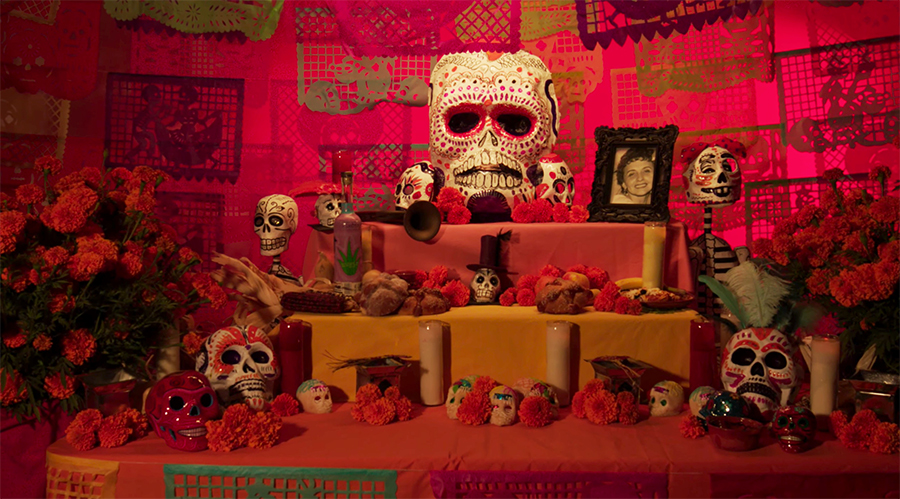What is Día de los Muertos and what are the meanings behind how is an ofrenda decorated? In this video from Kidspace Children’s Museum in Pasadena, California, a puppet La Calavera Catrina introduces Mexico‘s colorful holiday, celebrated on November 1st and 2nd.
Recognizable by her fancy hat with feathers, La Catrina is an icon of the Mexican Day of the Dead, but her image has changed with culture and art over the decades. Via The Grace Museum, La Catrina’s history involves artists Jose Guadalupe Posada and Diego Rivera, as well as traditions from Aztec history:
“Mictēcacihuātl – the queen of the Aztec underworld of Chicunamictlan was the central figure for anyone who passed on in the Aztec culture. The Aztec celebrated death as a part of the cycle of life, leaving offerings or temporary altars or “ofrendas” intended to assist them on their journey beyond death.”

Learn more about ofrendas from this blog post by Vince Dominguez, a Kidspace Children’s Museum team member:
“These altars can be simple, but often, they are elaborately decorated in vibrant colors and wonderful images. The altars contain images of loved ones, candles, sugar skulls known as “calaveras” and most importantly, it is a place for “ofrendas” or offerings for those who have passed. These consist of some of the favorite things that the person enjoyed like specific treats or drinks. This is to welcome them and help aid them on their journey to and from the afterlife. My family has created these altars for as long as I can remember, and it has grown, as we have had to say goodbye to our loved ones throughout the years.”

“The bottom level usually contains candles, flowers, towels, and water. The candles are used to light the way back to us with the fragrance of the flowers enticing the spirits to come back. We lay out the towel and water so that they can refresh themselves after their long journey. The second level is where we place the food and special treats that they loved while they were here. The top level is where we place the images and personal belongings of those who have passed. Next to each image we try to include an item that belonged to them. For example, we place my father’s walking cane and favorite hat beside his photo. This helps us reconnect with the spirit in a physical form.
“Along with these offerings we would often burn incense as we use it to cleanse and drive away bad spirits in preparations for your loved ones to return. Brightly colored tissue paper and decorations are hung on and around the altar as a representation of the celebration of life and is a reminder that this should not be a somber time, but one for celebration and welcoming home those you have missed.”
The team also created the video in Spanish:
• How to make Paper Marigolds with Kidspace
• La Catrina, a history from the Grace Museum
• The Meaning Behind Six Objects on Día de los Muertos Altars at Smithsonian Magazine
Watch more about Mexico, plus these videos:
• Butch Locsin in Mexico City’s 2019 Day of the Dead Parade
• Alebrijes, Mexico’s Beautiful Monsters
• Dia de los Muertos, an animated journey to the land of the dead
Curated, kid-friendly, independently-published. Support this mission by becoming a sustaining member today.

